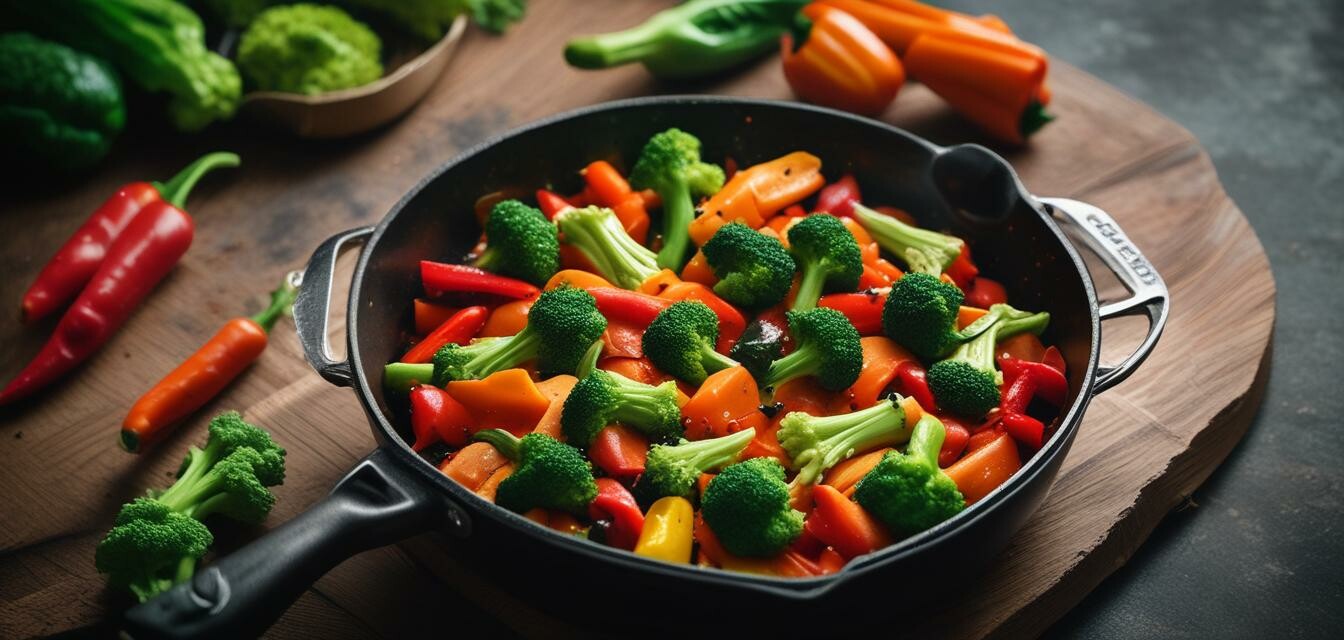
How to Master the Perfect Stir-Fry
Creating a delicious stir-fry is an art that can elevate your culinary skills. This article provides essential tips and tricks for making mouth-watering stir-fry dishes that retain their flavor and texture. Whether you are a novice cook or a seasoned chef, these insights will help you achieve the perfect stir-fry every time.
Key Takeaways
- Use the right ingredients: fresh vegetables and quality proteins are crucial.
- Ensure your wok or pan is properly preheated for even cooking.
- Choose the appropriate oil to enhance flavors.
- Don't overcrowd the pan to maintain the perfect texture.
- Practice proper cutting techniques for uniform cooking.
The Basics of Stir-Frying
Stir-frying is a quick cooking method that involves chopping ingredients into bite-sized pieces and cooking them in a very hot pan with a small amount of oil. This technique preserves nutrients while keeping food flavorful and colorful.
Essential Ingredients
The foundation of any great stir-fry lies in the ingredients. Here’s a quick breakdown of what you'll need:
| Category | Examples |
|---|---|
| Proteins | Chicken, beef, tofu, shrimp |
| Vegetables | Bell peppers, broccoli, carrots, snap peas |
| Aromatics | Garlic, ginger, green onions |
| Sauces | Soy sauce, oyster sauce, hoisin sauce |
Choosing the Right Cooking Equipment
To achieve the best results, you need to use the right equipment. Here are the basics:
- Wok: Ideal for stir-frying due to its high sides and ability to withstand high heat.
- Spatula: A wide, flat spatula helps to toss ingredients easily.
- Cutting Board and knife: Essential for preparing ingredients with uniform size.
Preparation Techniques
Cutting Vegetables
Proper cutting techniques ensure even cooking. Here are a few key tips:
- Always use a sharp knife.
- Cut vegetables into similar sizes to ensure even cooking.
- Consider the cooking times for each ingredient; harder vegetables should be cut smaller.
Cooking Process
Now that you have your ingredients and equipment ready, it’s time to get cooking. Follow these steps:
- Preheat your wok or pan over high heat.
- Add a suitable oil (like vegetable or peanut oil) and let it heat until it shimmers.
- Add proteins first, stirring frequently until cooked through.
- Add aromatics, followed by vegetables, and stir-fry in batches if necessary.
- Pour in sauces at the end and toss everything until coated.
Common Mistakes to Avoid
Here are some pitfalls to watch out for:
- Overcrowding the pan can steam food instead of frying it.
- Not preparing ingredients beforehand can lead to burnt or overcooked components.
- Removing ingredients early or late can affect texture and flavor.
Pros
- Quick and easy cooking method.
- Retains flavor and nutrients of ingredients.
- Highly versatile with various ingredient options.
Cons
- Requires some skill to avoid overcooking.
- May need specific equipment like a good wok.
- Can be messy if not prepared correctly.
Experimenting with Flavors
Different sauces and seasonings can take your stir-fry from good to great. Here are some ideas:
- Add a splash of sesame oil for depth.
- Include a variety of sauces for a unique taste.
- Experiment with fresh herbs like cilantro or Thai basil at the end.
Conclusion
Mastering the perfect stir-fry involves attention to detail and practice. Using the right ingredients, equipment, and techniques will breathtakingly elevate your cooking. For further culinary adventures, explore our selection of cookware sets, or check out our guide on cooking tips & techniques for more insightful articles. Enjoy the vibrant flavors and textures of your homemade stir-fry!